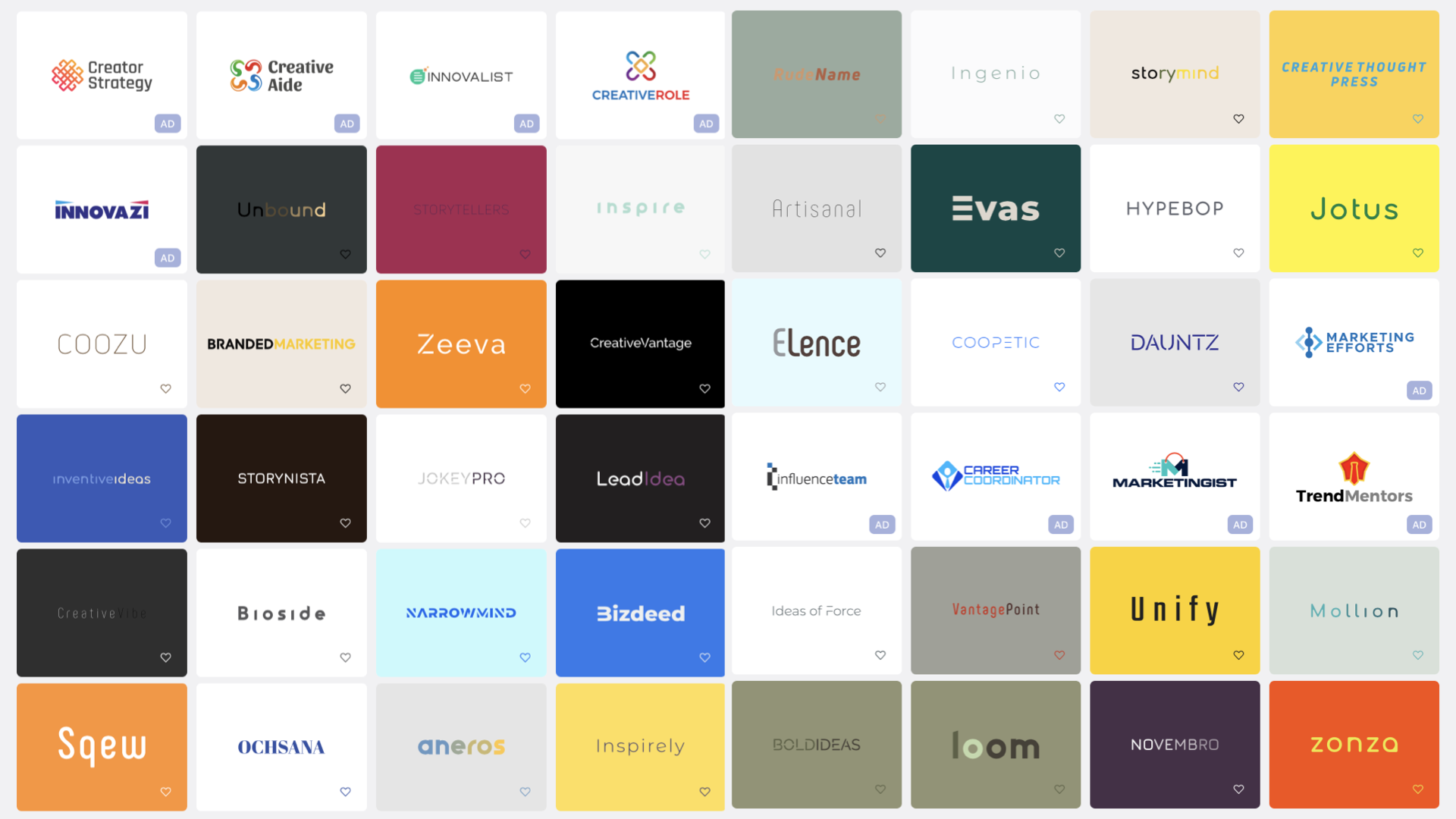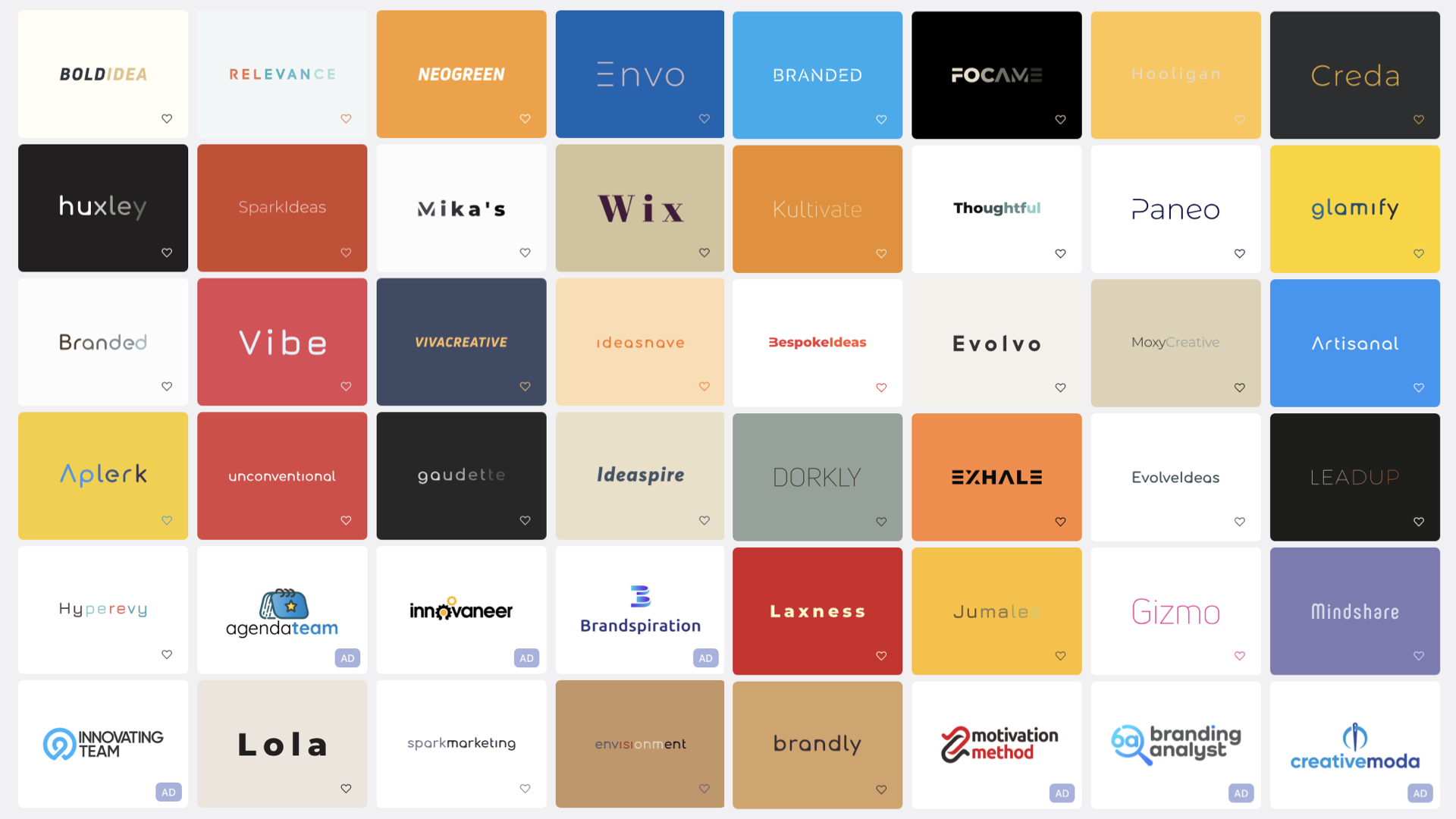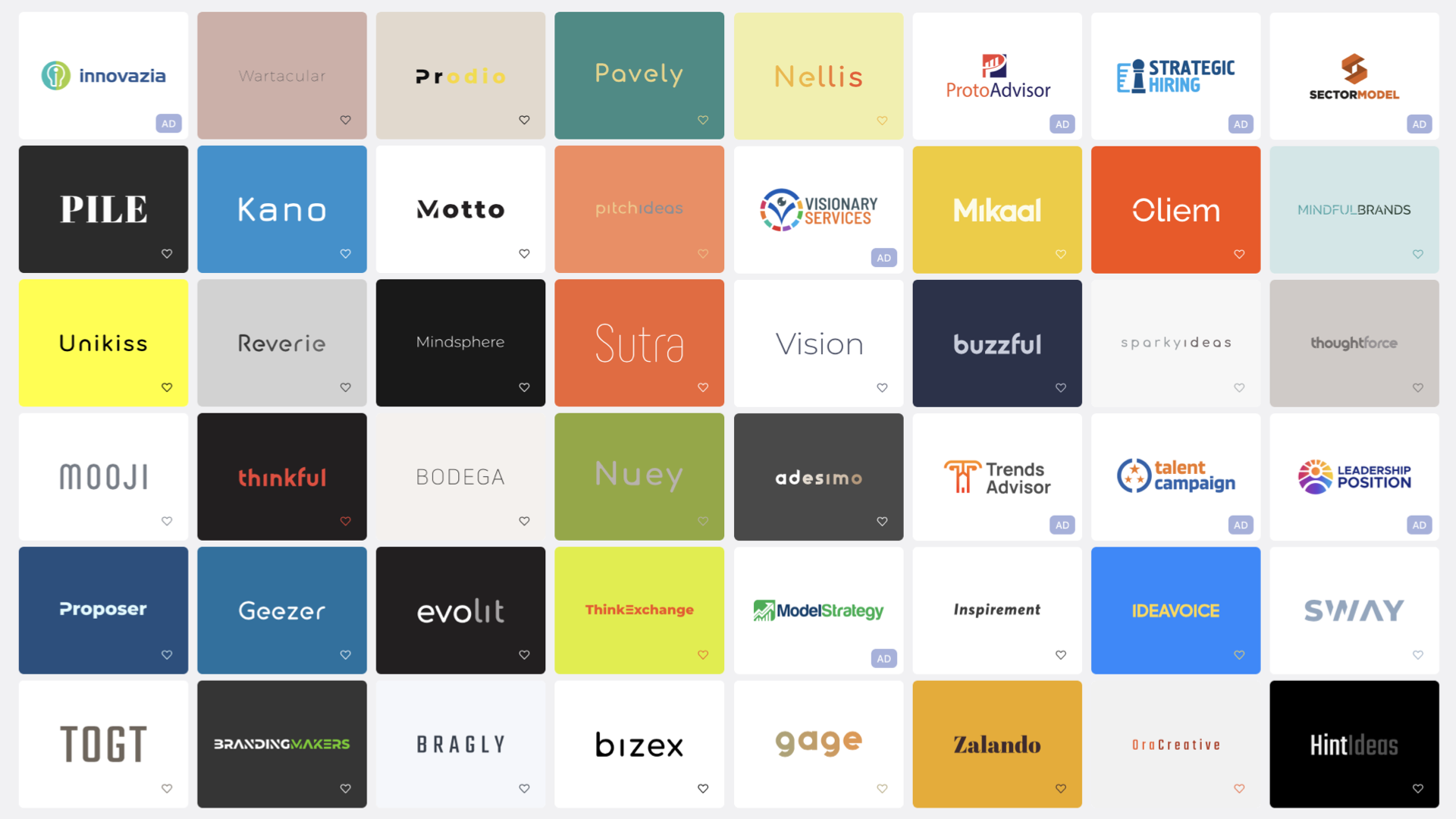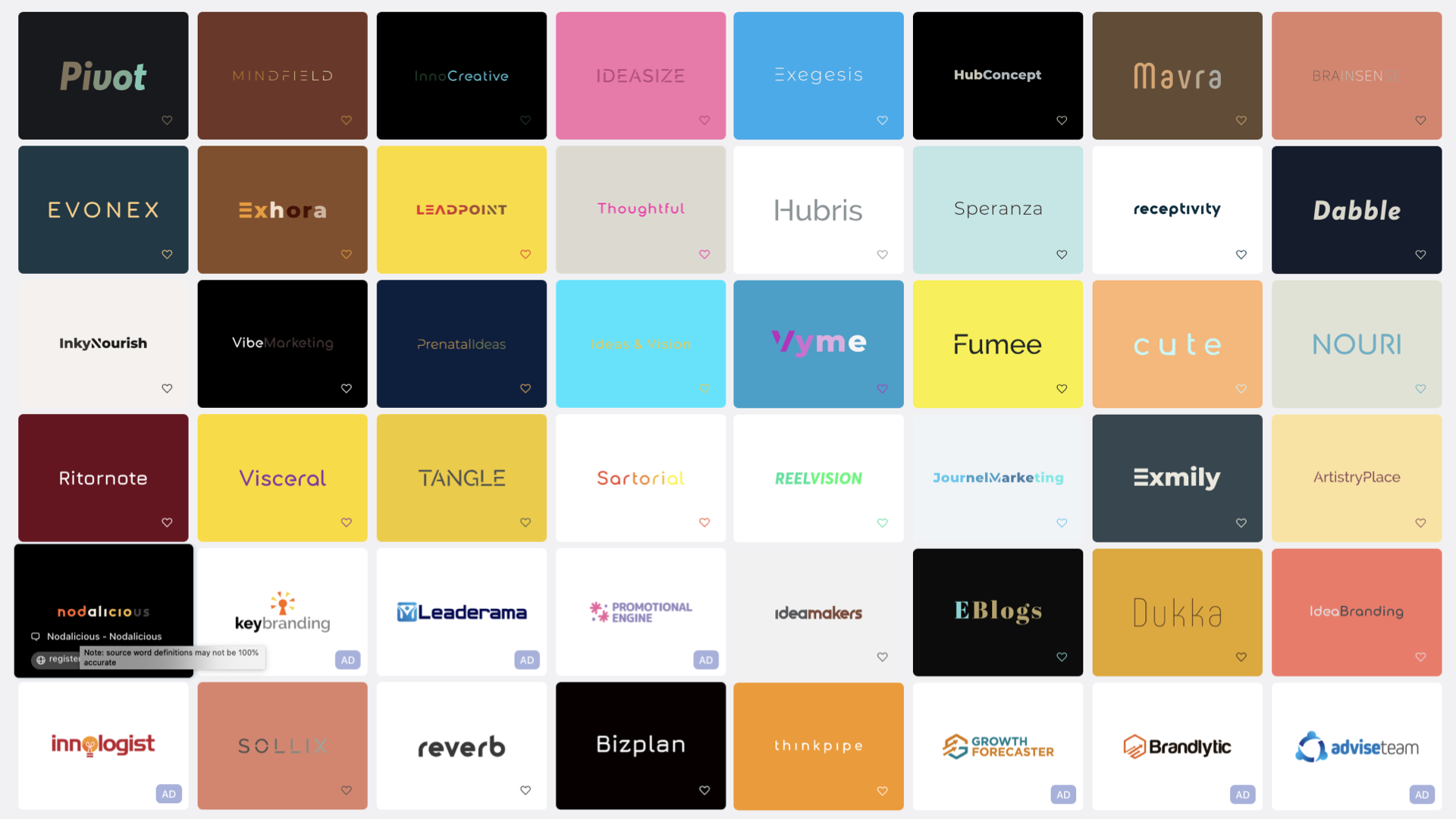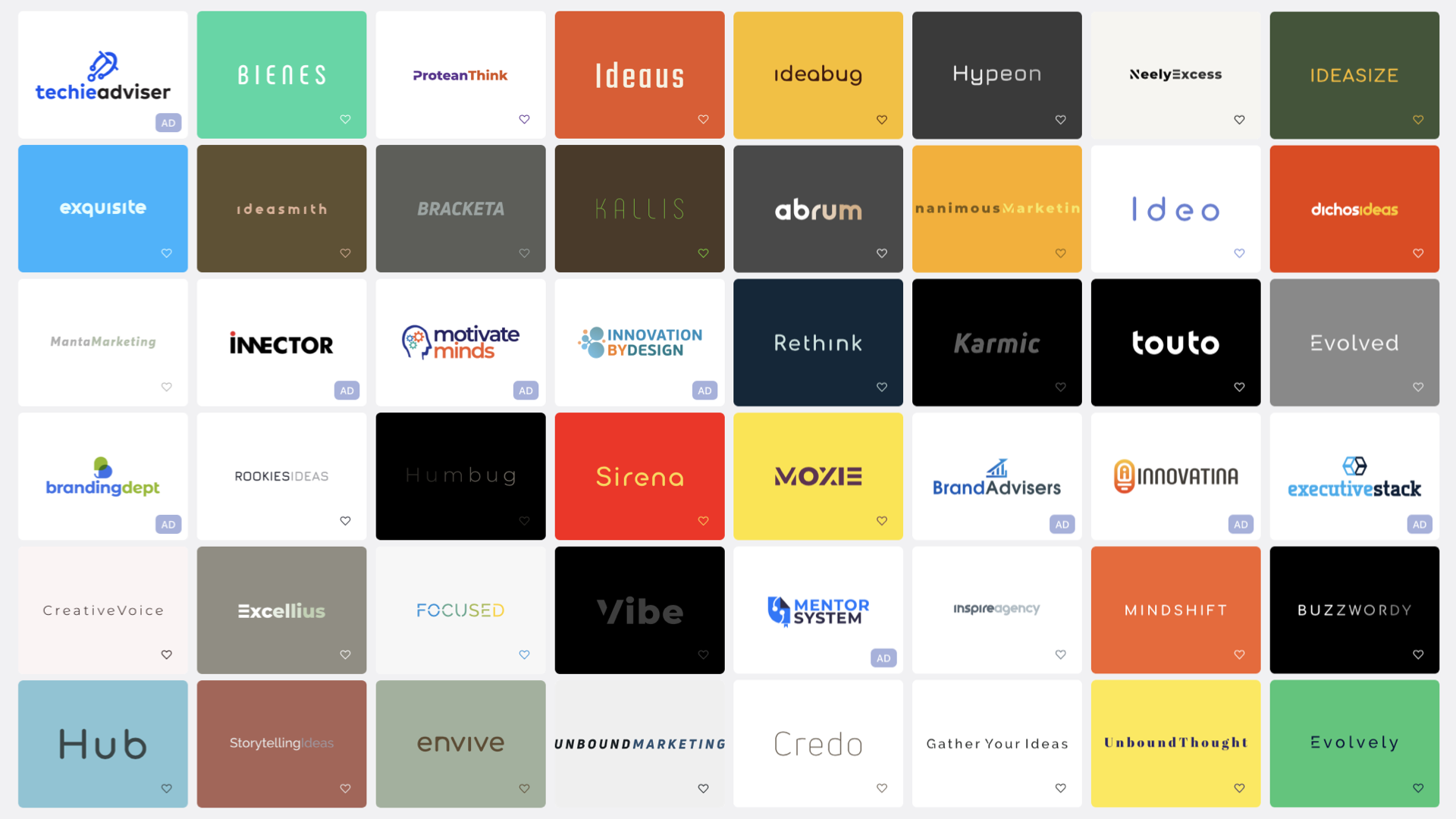What’s the Value in Creativity Today?
A computer generated these names and the designs for a new consulting brand in less than a second.
Let’s say you need to come up with ideas for a business name. Or a product or service name. Or a name for an event. Or a prize. Or an initiative. Or maybe you need to name a snowplow in Vermont.
The great thing is that humans come up with names for things all the time. But maybe this isn’t your skill, or at least you were under the impression you were not good at naming things.
That’s why the naming sector exists. This is a small subset of the broader Creative industry alongside skills including design, advertising, theater, screenwriting, architecture, sculpture and social media influencing. Way back in the day you could hire people with degrees in etymology and Romance languages and they would listen to your business issues and come back with highly articulated presentations with naming ideas. (You can still do this, of course, because these experts still have proven value.)
Now, one of the major stereotypes here, an error in perception, focused on quantity. We used to perceive the value in hiring a naming firm (or your cousin Nancy who is very creative) was quantity. That naming firm, or your cousin Nancy, has the magic ability to generate tonnage of ideas. Don’t like this one? They have dozens more. Until the end of time. They have patience, and process, and resilience to just keep generating stuff. Because let’s be honest, you do not have all the time to generate naming ideas. They do, and you pay them for it.
Now, thanks to processing and code, quantity is no longer a skill or ability of any real value.
But we still need certain skills. Here’s why…
Let’s say you head over to Namelix to generate a new name, and since it’s just code they’ll throw in graphic design as well.
The challenge starts with keywords. What might yours be, relevant to whatever it is you’re trying to name? This might not seem particularly difficult since it’s a pretty logical, right brain activity. I work in marketing leveraging creativity and I think I’m a leader with ideas, so: “marketing creative leadership ideas.” That’s not difficult.
Namelix adds a notion of Randomness to its process, which is sort of engineering-speak for “give our algorithm some more information that might prove useful.” But then we get to Name Style, which is where the old line naming firms used to derive a lot of consulting value since you likely hadn’t considered the range of potential styles a name could take. Fortunately, Namelix lets you not think about what used to be a significant point in a presentation and lots of billable hours, so we just select “All.”
These three steps—what you could refer to as Strategy—took me less than a minute. Prior to this code existing, the in-person consultative equivalent might have taken weeks? Months?
And, in a magical flash, we get to an endless flow of not just names but graphic design as well…
Let’s be very clear: 98% of the names and design here are garbage. Also, very likely not a name you could legally own. (Hello, Wix!) Or a design that would help you stand apart.
But that’s not the point. Quantity is no longer the point.
The point is, can you discern the 2% that might not be garbage, and might be a good idea that will help you achieve your goals?
That’s where the value exists today. It’s the billable work of curation and distillation and refinement. What’s brilliant about tools like Namelix is we get to have the nuanced, strategic, valuable conversation faster. We can get to the point faster.
Even better, we get to talk about Design.
Let’s say Geezer made all the sense in the world for naming my new service brand. And let’s assume we did enough research to confirm I could legally own the trademark for the service brand Geezer™.
Now we need to design a service mark, a fancy way of describing the look of the brand name, or logo. We need to look at typography, color, emphasis, iconography, and a myriad interconnected details.
In the olden times, which was 2021 or maybe even 2018, we would have meetings about this step. But thanks to our speedy algorithm we can just play around and instantly review potential creative direction. The results above took maybe a minute to generate. But again, this is entirely not the point.
The value in creativity today is having the ability to discern what’s the most effective choice, and to sell that direction.
The value in creativity is a kind of leadership which removes doubt, instills confidence and helps people to see a clear, potent path forward. Especially when seeing that path is difficult.
Namelix doesn’t yet confer taste, or evaluate efficacy. (One has to assume engineers and strategists and legal people might be working on that.)
We’re strapped to a rocket ship moving very swiftly forward, whether we like it or not. That rocket is code and user experience and ideas disrupting stereotypes around where and what equals creative value. Technology has not replaced Creativity, but has itself become radically creative. Those of us who work in this space have an incredible opportunity to take advantage, and to continue to serve those who need the benefits Creativity delivers.


